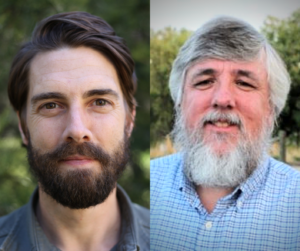The National Science Foundation has granted nearly $400,000 to a team of scientists from Colorado State University, University of Colorado Boulder and University of Louisville. The study will investigate the impacts of social and environmental changes as a driver of human migration in Tanzania.

The research team from CSU includes Warner College of Natural Resources assistant professor, Jonathan Salerno in the Department of Human Dimensions of Natural Resources, and Randall Boone; a Research Scientist within the Natural Resource Ecology Lab and professor in the Department of Human Dimensions of Natural Resources. Salerno will act as principal investigator for the project.
Salerno said the project will provide some answers to what drives adaptive changes such as migration in response to issues such as climate change or social conflict, a topic that is generally understudied in the field of conservation.
“[Migration] is an important issue in Tanzania in particular because they are a very mobile population,” Salerno said. ‘The mobility is associated with environmental change [that comes with] with grazing livestock, clearing forest, and farming land. There’s environmental change associated with that mobility.”
A primary component of the research is analyzing individual or household-level survey data in order to discern who is leaving, and what possible impacts can be seen in that area and associated with migration.
“We’re really interested in trying to identify signatures of vegetation change on the ground that might be associated with land use intensity, or in other words, degradation,” Salerno said. “What we could see is over decades as individuals use landscapes, we would expect to see what we’ve called kind of a ‘brown down’, as opposed to a green up like [in the spring].”
With this data collected, the team hypothesizes that a ‘brown down’ on a large landscape scale could be associated with increased migration in the future as the land becomes too far degraded.
As well as using collected survey data, the project also aims to address these complex issues through satellite imagery. As a scientist for the NREL, Boone’s expertise with agent-based modeling will assist in decoding how people interact and adapt to environmental challenges.
“In a modeling context, we can try to recreate one instance [of migration], but we can also try different things,” Boone said. “One of the ideas associated with modeling and remotely-sensed information and all it works to do is that it can help to ground results.”
Examining structural impacts
Migration can be result of a combination of structural factors such as economic, political, social and even environmental challenges. Analyzing the connections between these dynamics and what motivates or forces people to leave their land is one area the project is hoping to uncover, Salerno added.
“The proposal is really looking at trying to find a balance between structural factors influencing migration, and individual or household agency,” Salerno said. “That would involve the decision-making processes, which takes into account your social networks, how much money you have, how many cows you have or how much farmland [you own]. So we are trying to study the balance between structural factors and individual agency.”
Although the project is still in preliminary stages and will not fully begin until July, the implications of COVID-19 are still at large. Access to on-site research is still uncertain, but the project plans on moving forward with the intention traveling to Tanzania in December of 2021.
Additional researchers include Lori Hunter, Andrea Gaughan and Joel Hartter (University of Colorado Boulder) and Forrest Sevens (University of Louisville).
The award numbers for this project supported by the National Science Foundation is 2049858.